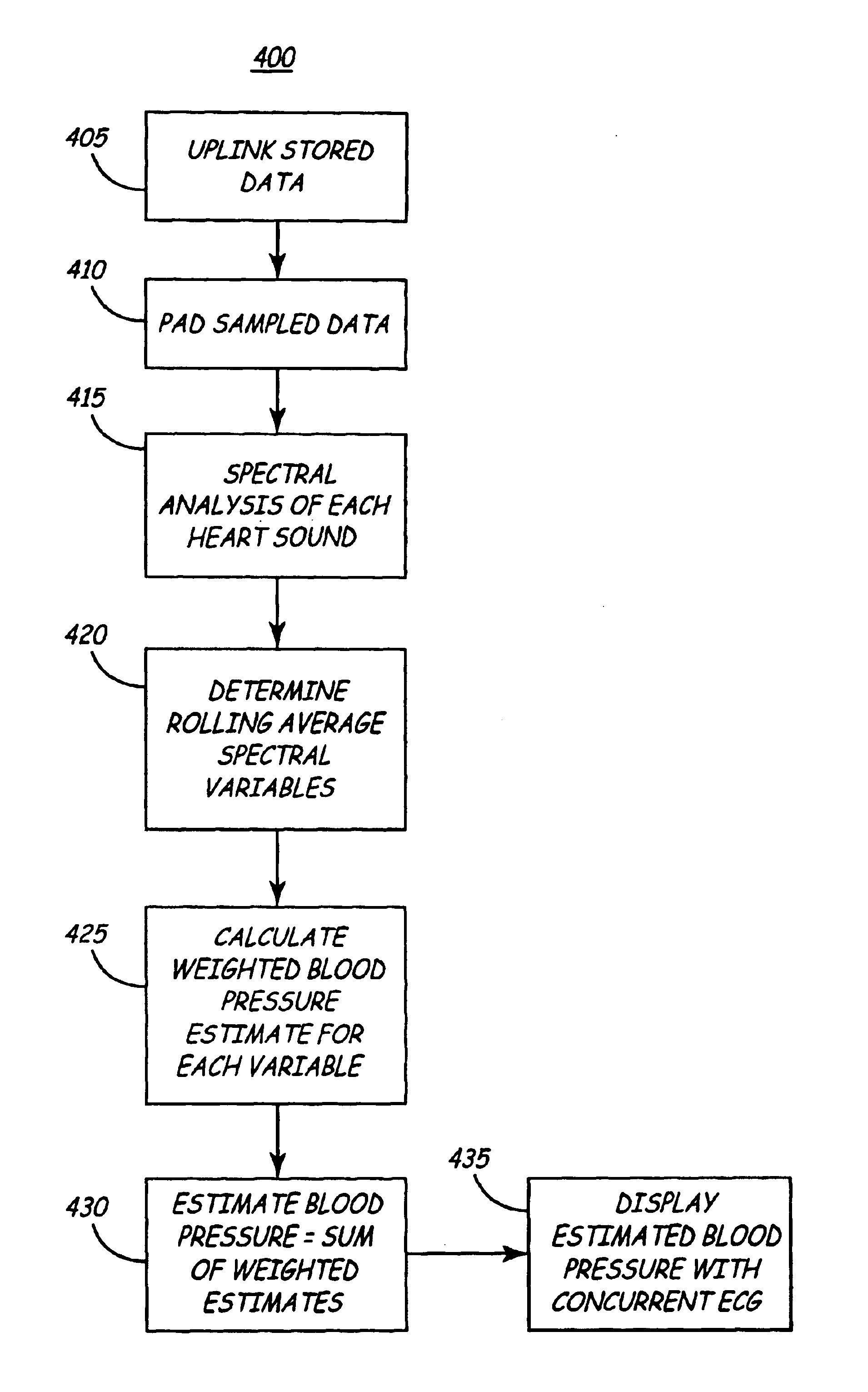Apparatus and method for chronically monitoring heart sounds for deriving estimated blood pressure
- Summary
- Abstract
- Description
- Claims
- Application Information
AI Technical Summary
Benefits of technology
Problems solved by technology
Method used
Image
Examples
Embodiment Construction
FIG. 2 is a plan view of an implantable device 10 for monitoring and storing ECG and heart sound data according to the present invention. The size and shape of device 10 may be provided as generally disclosed in commonly assigned U.S. Pat. No. 5,987,352, issued to Klein, incorporated herein by reference in its entirety. Device 10 is preferably implanted subcutaneously in the general thoracic region. Placement of device 10 near the sternum in the left pectoral region may generally provide good heart sound detection, however, optimal device placement may vary between individuals. An optimal implant site for receiving heart sound signals may be determined on an individual basis prior to implantation of device 10 by performing an examination with a stethoscope. Optimal recording sites for heart sounds in phonocardiography are reviewed in, “Blood pressure and Sound,” Chapter 7 in Medical Instrumentation: Application and Design, Second Edition, ed. John G. Webster, Houghton Mifflin Compan...
PUM
 Login to View More
Login to View More Abstract
Description
Claims
Application Information
 Login to View More
Login to View More - R&D
- Intellectual Property
- Life Sciences
- Materials
- Tech Scout
- Unparalleled Data Quality
- Higher Quality Content
- 60% Fewer Hallucinations
Browse by: Latest US Patents, China's latest patents, Technical Efficacy Thesaurus, Application Domain, Technology Topic, Popular Technical Reports.
© 2025 PatSnap. All rights reserved.Legal|Privacy policy|Modern Slavery Act Transparency Statement|Sitemap|About US| Contact US: help@patsnap.com



